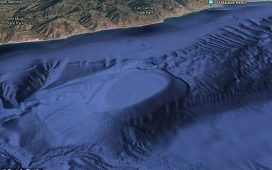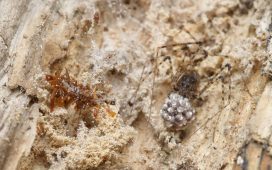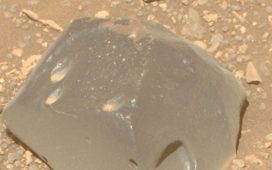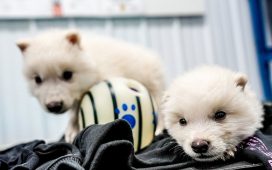
Dolphins and other toothed whales like orcas use a Kim Kardashian and Katy Perry-like “creaky voice” to catch prey in the deep, said a new study.
While previous research has shown these marine mammals use sound that travels far and fast underwater to hunt prey, the range of their rich vocal repertoires has remained a mystery.
The new research published in the journal Science on Thursday by scientists from the University of Southern Denmark, found toothed whales have at least three voice registers like humans.
These include the vocal fry register, also known as creaky voice, which produces the lowest tones, the chest register that is similar to our normal speaking voice and the falsetto register that produces even higher frequencies.
“Vocal fry is a normal voice register that is often used in American English. Kim Kardashian, Katy Perry and Scarlett Johansson are well-known people using this register,” explained study co-author Coen Elemans.
Researchers found the toothed whales particularly use the vocal fry register to produce their echolocation calls to reflected sound and catch prey.
“During vocal fry, the vocal folds are only open for a very short time, and therefore it takes very little breathing air to use this register,” Dr Elemans said.
This economy in the use of available air makes this voice register especially ideal for echolocation, scientists said.
While hunting, toothed whales like orcas dive as deep as 2,000 metres and are known to catch more fish in the process than the human fishing industry.
In these deep and murky waters, the creatures produce short, powerful and ultrasonic echolocation clicks at rates up to 700 per second to locate, track and catch prey.
“During deep dives, all air is compressed to a tiny fraction of the volume on the surface,” Dr Madsen said.
“Thus vocal fry allows whales access to the richest food niches on earth; the deep ocean,” he added.
While this creaky voice register may be considered “annoying” or “authoritative” in humans, the vocal fry has helped toothed whales become an evolutionary success story.
“Some species, like killer and pilot whales, make very complex calls that are learned and passed on culturally like human dialects,” Dr Madsen said.
While over 40 years ago, it was thought that toothed whales make sounds with their larynx just like other mammals, researchers later found these animals somehow use their nose to produce sound.
In the new study, scientists found toothed whales have an air-driven sound production system in their nose.
“Evolution has moved it from the trachea into the nose, which allowed much higher driving pressures – up to five times what a trumpet player can generate – without damaging lung tissues,” Dr Madsen said.
“This high driving pressure allows toothed whales to make the loudest sounds of any animal on the planet,” Dr Elemans added.
When whales dive over 100m, their lungs collapse to avoid compression sickness and they rely on the air found in the nasal passages of the skull.
Researchers said this air pocket provides a small but sufficient airspace to produce echolocating sound at astonishing depths of 2,000m.
To make sound at this depth, the whales pressurise air in their bony nose and let it pass structures called phonic lips that vibrate just as human vocal folds.
This acceleration, scientists said, produces sound waves that travel through the skull to the front of the head.
Researchers filmed the phonic lips using approaches such as using both trained dolphins as well as animals in the wild that were moving freely.
“It took us close to 10 years to develop new techniques, gather and analyse all our data,” Dr Elemans said.











